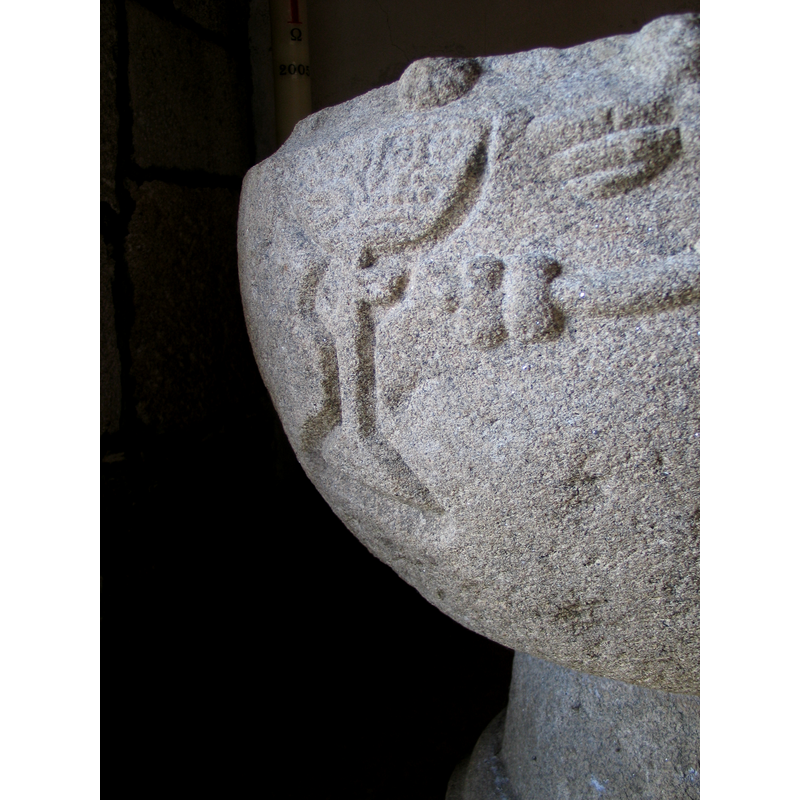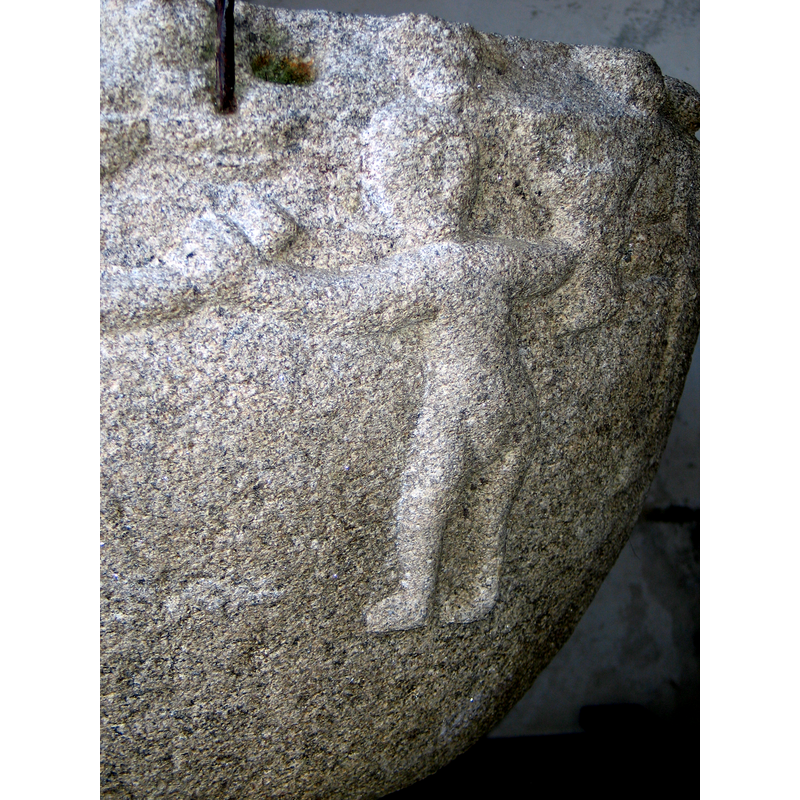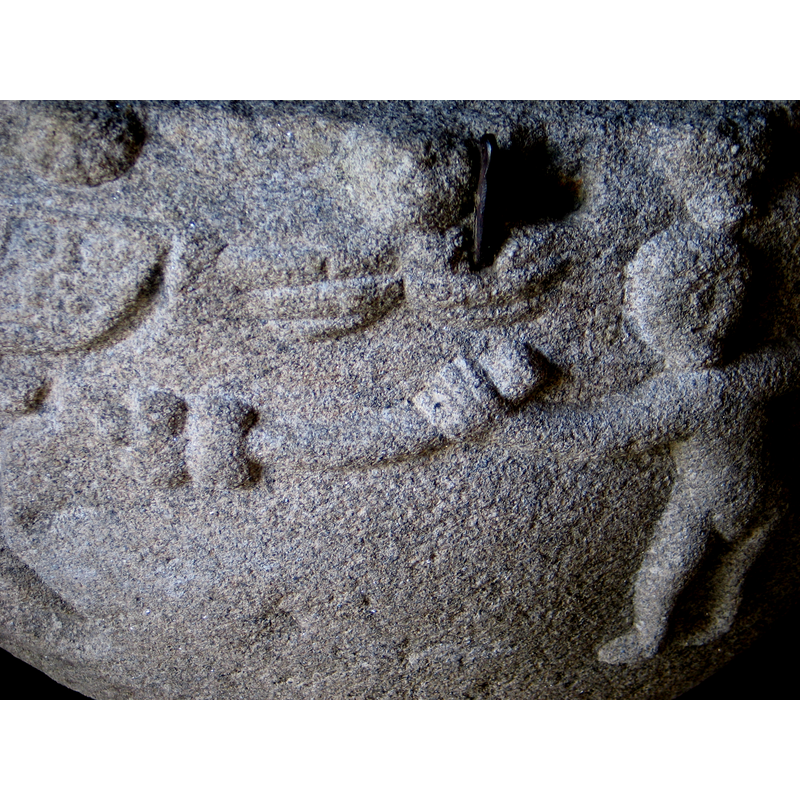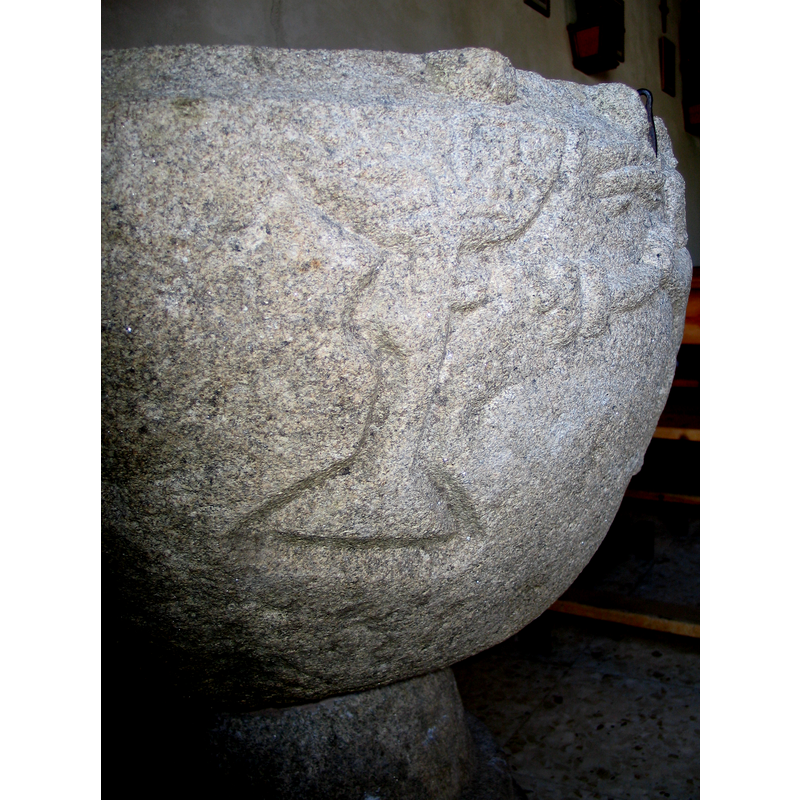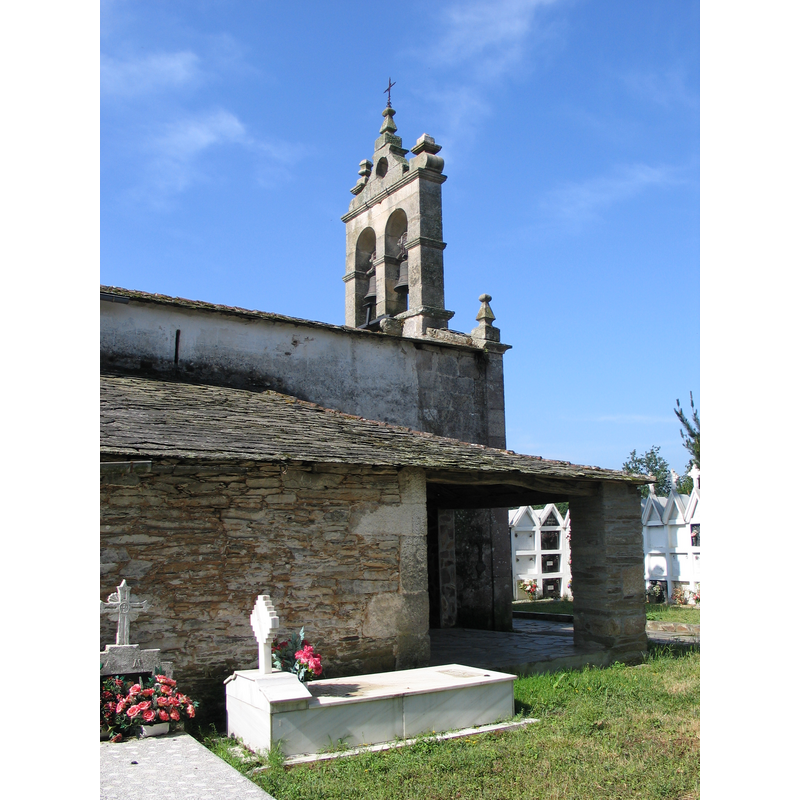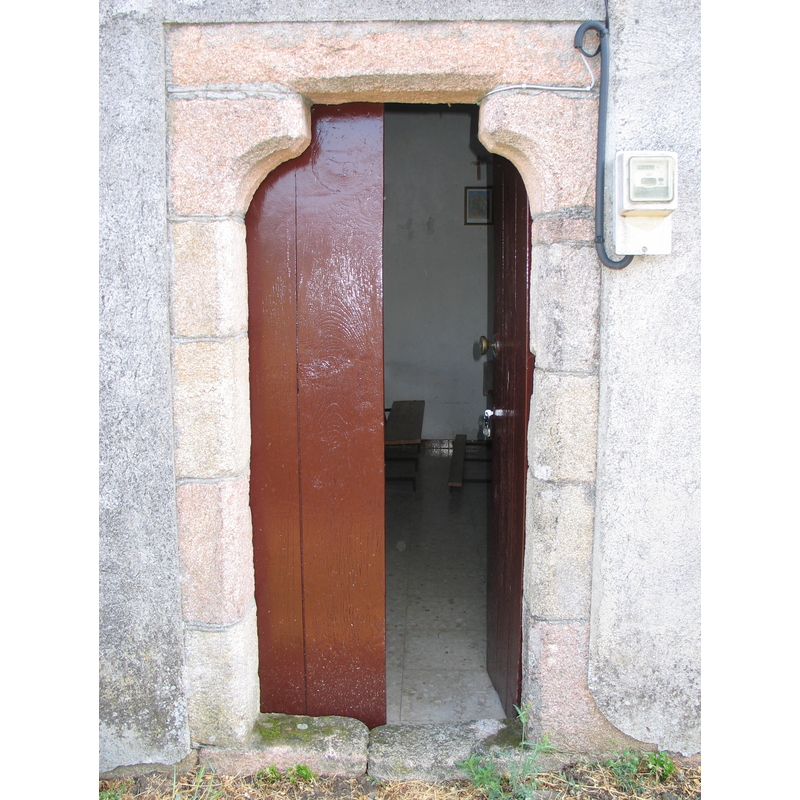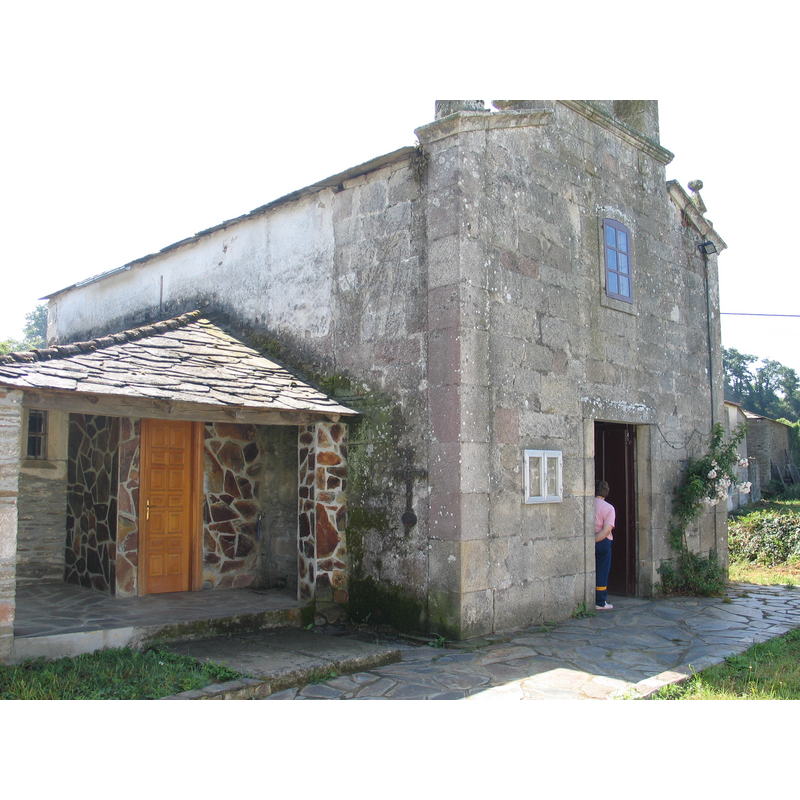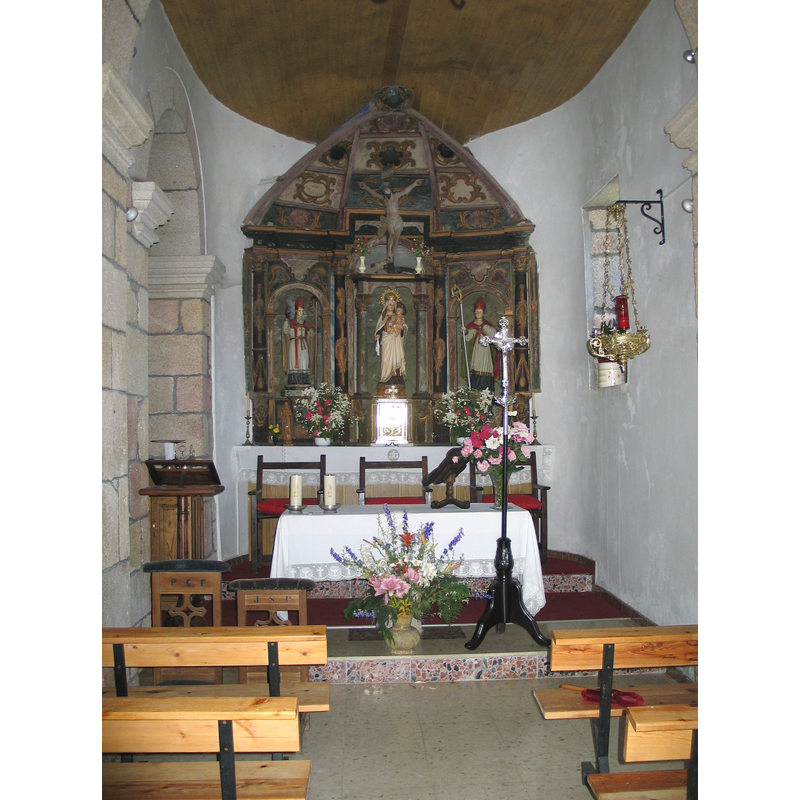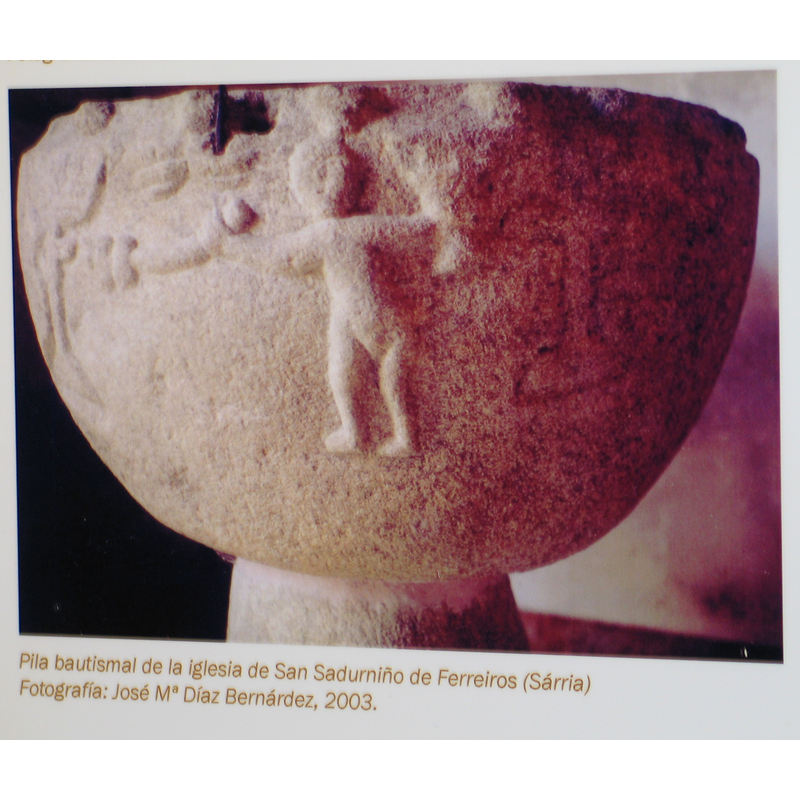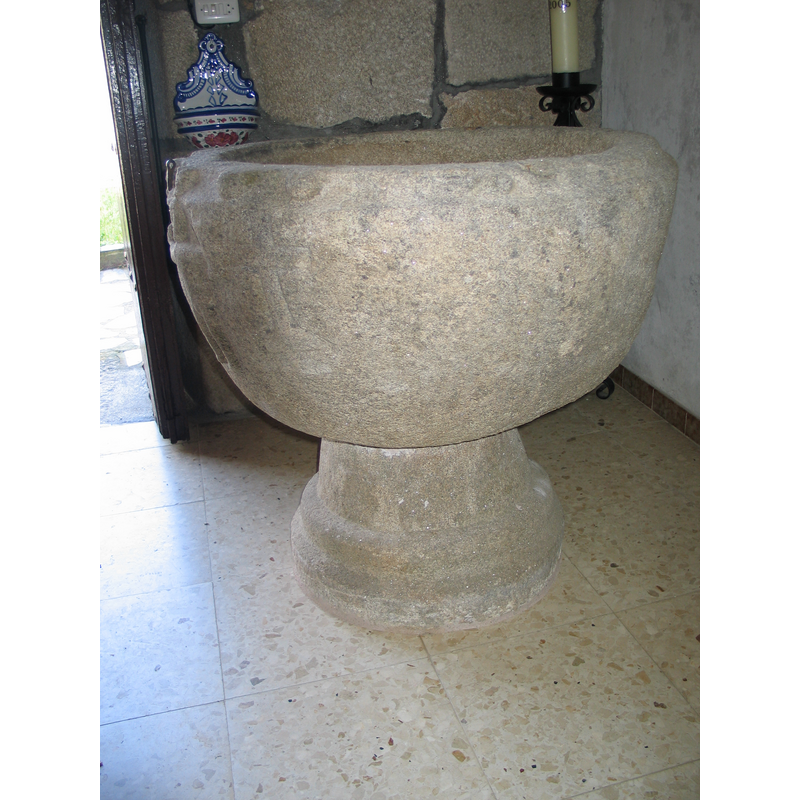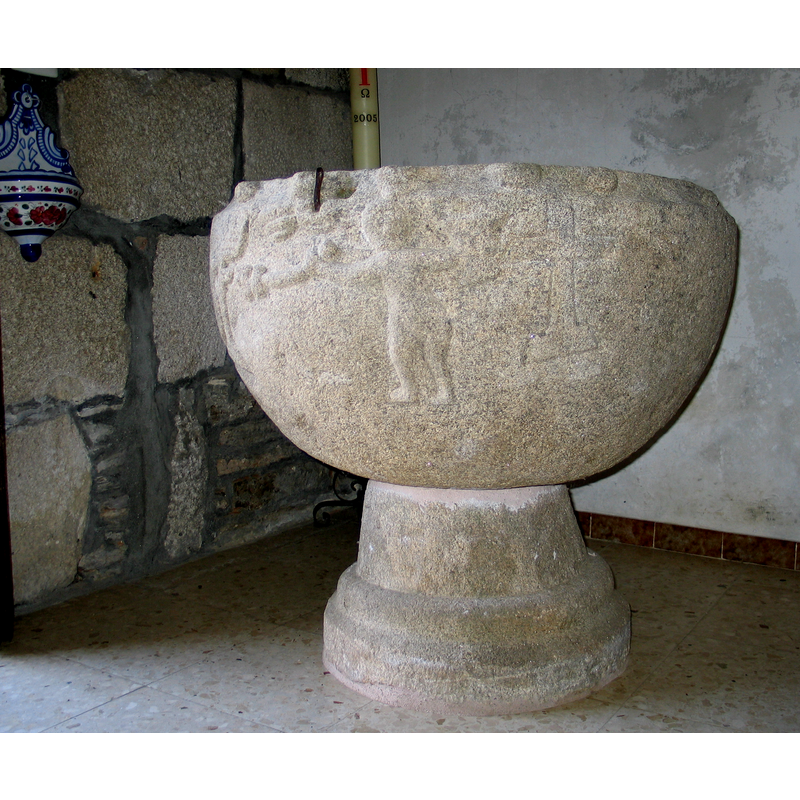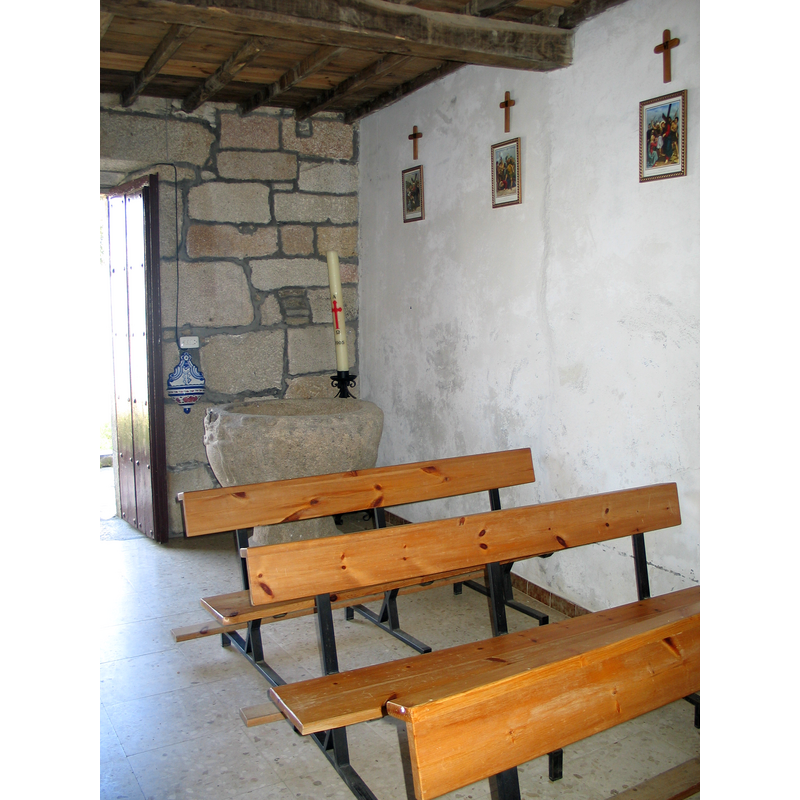Ferreiros

Image copyright © Baptisteria Sacra Index, 2023
Results: 22 records
B01: symbol - tree - Tree of life
B02: human figure - naked - with whip (?) in right hand - with chalice in left hand
B03: symbol - cross - Latin - on a step
B04: design element - motifs - unidentified
BBU01: symbol - shell - 5
view of basin - detail
view of basin - detail
view of basin - detail
view of basin - interior
view of basin - south side
view of church exterior - north porch
view of church exterior - south door
view of church exterior - west façade
view of church interior - looking east
view of church interior - looking west
view of font
view of font
view of font
view of font - east side
view of font - northeast side
view of font - southeast side
INFORMATION
FontID: 09186FER
Object Type: Baptismal Font1
Church/Chapel: Iglesia Parroquial de San Saturnino / San Sadurniño
Church Patron Saints: St. Saturninus
Country Name: Spain
Location: Lugo, Galicia
Directions to Site: Located in the municipality of Sárria: from Sárria, follow the road to Becerreá to the rotunda that offers a) Poligono Industrial and b)Ferreiros -- follow b)Ferreiros for about 1 km and continue pass the bridge
Font Location in Church: Inside the church, in the W end, N side
Century and Period: 12th century [basin only], Medieval [composite]
Font Notes:
Click to view
Described in Castillo López (1987 c1972): ancient baptismal font decorated with interesting carvings in a popular technique. Vázquez Saco [?] notes it as a baptismal font of great historical value, consisting of two pieces [Vázquez Saco (ibid.) dates the base about two centuries later than the basin, which he dates to the fabric of the old church, early 11th century]; he notes a crudely carved naked human figure holding a whip or scourge in the right hand and a chalice in the left hand; to the right of the figure VS notes a Latin cross on a stand, and to its left a Tree of Life also on a stand; VS also notes a series of heads towards the upper rim [NB: not at all looking like heads; rather, shells [NB: the church is in the path of the Camino Francés to Santiago]. Vázquez Saco (ibid.) notes that part of the sculpture shows some Visigothic stylistic traits combined with others that are more of the Romanesque order. Noted and described in Delgado Gómez (1993) with reference to Vázquez Saco. On-site notes: the font, made of course-grain granite, consists of a hemispherical basin raised on a short round pedestal; the basin has a central drain; probably 12th-century. According to both local sources and Vázquez Saco (ibid.), the font was kept until only 2-3 years ago [i.e., 2003-2004?] outside the church, and was brought in by the current parish priest. There are iron staples in the upper rim of the basin from an earlier font cover but the cover itself is reported by local sources as "burned years ago". A modern stone bowl with ribbed pattern decoration was used as replacement during the years the old font was pushed out of the church and used as a planter [NB: the replacement font is modern and therefore not indexed here]. [*NB: we are unable to cite the bibliographical reference of the original work by Francisco Vázquez Saco; instead we have used a reference to his work in Delgado Gómez (1993)]. [We are grateful to Cristina [?] of the Oficina de Turismo de Sárria, and to Concha and Luis, churchwardens at Ferreiros, for their help in documenting this font during our visit on 13 June 2006]
MEDIUM AND MEASUREMENTS
Material: stone, granite
Number of Pieces: two
Font Shape: hemispheric (mounted)
Basin Interior Shape: round
Basin Exterior Shape: round
Rim Thickness: 12 cm
Diameter (inside rim): 76 cm
Diameter (includes rim): 100 cm
Basin Depth: 21 cm
Basin Total Height: 45 cm
Height of Base: 40 cm
Font Height (less Plinth): 95 cm
Notes on Measurements: BSI on-site
LID INFORMATION
Notes: [cf. FontNotes]
REFERENCES
Castillo López, Angel, Inventario de la riqueza monumental y artística de Galicia, [La Coruña]: Fundación Pedro Barrié de la Maza, 1987 (c1972)
Delgado Gómez, Jaime, El camino francés de Santiago en su tramo lucense, La Coruña: Hércules, 1993
![[cf. Font notes]](/static-50478a99ec6f36a15d6234548c59f63da52304e5/compressed/1060702004_compressed.png)
![[cf. Font notes]](/static-50478a99ec6f36a15d6234548c59f63da52304e5/compressed/1060702007_compressed.png)
![[cf. Font notes]](/static-50478a99ec6f36a15d6234548c59f63da52304e5/compressed/1060702003_compressed.png)
